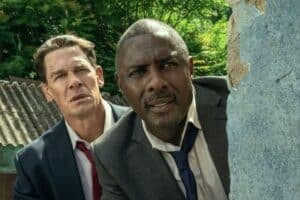Many are familiar with the jungle's favourite mancub whose adventures were first told in Rudyard Kipling's Mowgli's Stories.

Walt Disney explored this timeless tale in his 22nd animated feature film The Jungle Book, featuring the story of a human boy who is raised by the animals of the jungle.
Yet as carefree as Mowgli’s days in the jungle may seem in the film, the making of this Disney classic was not without problems. With the production running over four years, the voice of the initial boy cast in the role of Mowgli shed its high-pitched innocence. It was 10-year-old Bruce Reitherman, the youngest son of “Woolie” Reitherman, the film’s director, who stepped in.
“They didn’t need a kid with a tremendous ability to ‘act’ like a kid, they just wanted a kid to be a kid, so it was type-casting for me, I suppose,” recalls Reitherman.
The turn of events marked the beginning of a lifelong career with film and animals for Bruce Reitherman. As the inspiration behind Mowgli, young Reitherman fulfilled every child’s wish to play all day and “talk” with the animals of the jungle. Now, 40 years later. Reitherman is an award-winning wildlife filmmaker and the subject of a new bonus feature on the two-disc platinum edition DVD release of The Jungle Book.
With over 20 years of documentary experience, Reitherman has travelled to photograph exotic locations on six continents. Surviving encounters with scorpions, black widow spiders, rattlesnakes, bears and even a foul-tempered mother moose, Reitherman recognises the symmetry of his childhood animation adventures.
“Early on, I realised that making movies about the natural world was what I really wanted to make my life about and there’s no better way to see a film take shape than to watch an animated feature in progress,” notes Reitherman.
One of the earliest artists with the Walt Disney Studios, Wolfgang Reitherman joined the animation department long before production began on Snow White.
“He studied, quite literally, at the feet of the master, Walt Disney,” remarks the younger
Reitherman. Over the years, “Woolie”, as Wolfgang was known, rose through the ranks in the studio and was selected by Walt Disney to helm the animation division as Disney grew busier with his television and theme park efforts. It was Woolie who kept the Animation Studios thriving after Walt Disney’s unexpected death in 1966 – during the production of The Jungle Book.
“I don’t think that he would take much credit for having been the one that steered the ship through the dark seas, but he was the guy that had to stand at the wheel and the evidence is that he did a pretty good job of it,” notes Bruce Reitherman.
‘Woolie’ Reitherman successfully helmed the animation division before retiring in 1981 and passed away in 1985.
Bruce Reitherman is clearly proud of his father’s legacy within Disney Animation and the ground-breaking efforts there that shaped animation into one of the defining art forms of the 20th century.
“It had to do with their ability to look at life… closely, deeply, sensually,” notes Reitherman.
“I think all those guys had a strong sense of how to observe life and then make it an art by generously trying to communicate their observations, their understandings, their perspective through the medium of their art.”
– Disney.






